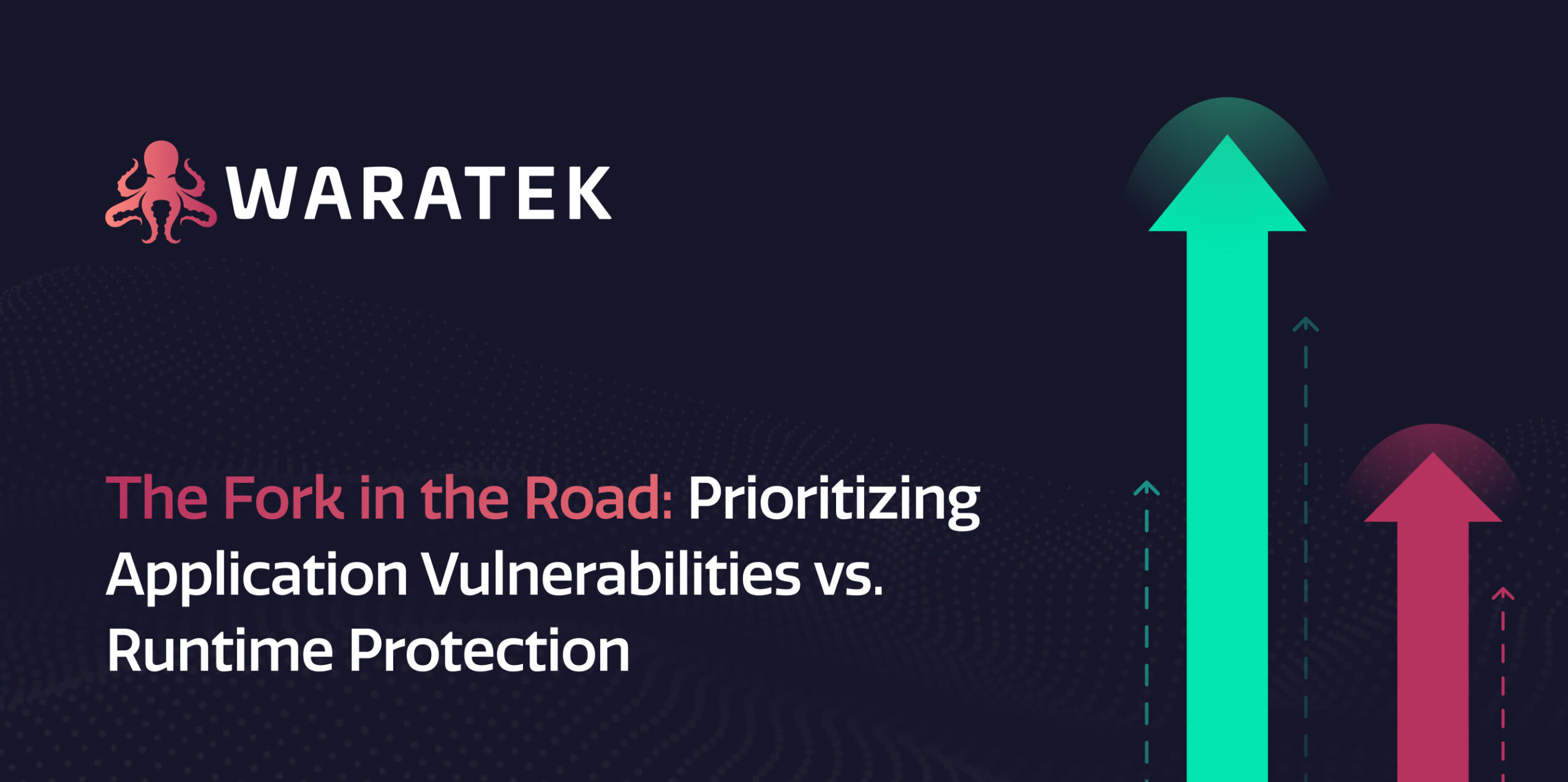In the field of application security, organizations are continually seeking better tools for hunting and reporting vulnerabilities. Static Application Security Testing (SAST) and Dynamic Application Security Testing (DAST) scanners have been stalwarts in this search. Yet, despite their capabilities, scanners don’t do anything to remediate vulnerabilities they’ve identified. This leaves latency in the timeline of the application security process — gaps through which attackers can squeeze before a problem is manually addressed.
Fortunately, if your job is to ensure the integrity of web applications at your organization, solutions like Waratek can plug these gaps in real time, reducing your operational latency to practically zero. Your security shouldn’t end with deployment; it should be an integral part of your application, serving as the last line of defense.
SAST vs. DAST Scanners
SAST tools analyze application source code to identify security vulnerabilities without requiring the code to be executed. They scrutinize the codebase for patterns or coding practices known to lead to security issues, offering developers the chance to correct these problems early in the development lifecycle. This “shift-left” approach helps to catch vulnerabilities before code is shipped and they become embedded in the final product.
Meanwhile, DAST tools take a different approach. DAST scanners test the application in its running state, mimicking attacks on a live application to identify vulnerabilities. This dynamic analysis reveals issues that only appear during the application’s execution, providing insights into runtime and environmental vulnerabilities that SAST might miss.
Both methodologies are integral to a comprehensive security strategy. SAST allows for early detection in the development cycle, while DAST offers a real-world perspective on application behavior. Together, they provide a multi-faceted view of an application’s security posture.
Where Scanners Fall Short
Both SAST and DAST scanners provide invaluable insights into potential vulnerabilities. However, their capabilities are not without limitations, which can leave applications exposed to sophisticated attacks. These include:
- Limited Detection Scope: Both SAST and DAST scanners have predefined parameters within which they operate, primarily based on known vulnerabilities and attack patterns. Meanwhile, this structure is inherently reactive, relying on updates from vendors to include detection for new vulnerabilities. This limitation means they might not identify new, complex, or nuanced threats that don’t fit within their detection frameworks, leaving applications exposed to emerging threats until the scanners are updated.
- High False Positives/Negatives: Scanners often struggle with the accuracy of their findings, leading to high rates of false positives, where benign code is flagged as vulnerable, and false negatives, where actual vulnerabilities are missed. This inaccuracy necessitates significant manual review, adding to the resource burden.
- Lack of Runtime Context (SAST): SAST tools, by design, do not consider the application’s runtime environment, which can lead to the overlooking of vulnerabilities that only manifest during execution or depend on specific user interactions.
- Limited Internal Visibility (DAST): Conversely, DAST scanners, while effective in testing exposed interfaces and externally visible aspects of applications, lack visibility into the internal workings of the application. This gap means that issues within the non-exposed components or those requiring specific internal conditions might remain undetected.
- Detection Only, No Remediation: A critical limitation of both SAST and DAST scanners is their focus solely on identifying vulnerabilities. While they serve as effective diagnostic tools, they offer no direct means of remediation. Addressing the detected vulnerabilities requires additional interventions, which can be resource-intensive and require deep security expertise. Meanwhile, scanners can identify that a vulnerability exists but often cannot provide specific details about its location in the codebase. This vagueness complicates and delays remediation efforts even more.
Each of these weaknesses adds to the operational latency of your security program — the time between the discovery of a vulnerability and the moment when the threat is neutralized. The longer this process takes, the more risk you hold of an attacker slipping between the gaps and gaining a foothold in your application. A security program is only as strong as its weakest link. You should be constantly iterating on your security protocols — identifying which weak points are most likely to thwart your defenses and how you can eliminate those risks.
Use Waratek to Fill in the Gaps
These shortcomings highlight the need for complementary solutions like Waratek that address vulnerabilities more holistically. Our approach is integrated at the runtime level, which offers unique advantages when addressing the limitations of both SAST and DAST scanners, such as limited scope and false positives. Meanwhile, by embedding security within the Java Virtual Machine (JVM), Waratek not only detects vulnerabilities as they are actively exploited but also provides automated, real-time remediation.
These capabilities allow Waratek to:
- Detect and Protect Against Runtime Vulnerabilities: Unlike SAST, Waratek identifies vulnerabilities as they manifest during execution, providing immediate mitigation options.
- Offer Precise Vulnerability Identification: Moving beyond the surface-level analysis of DAST, Waratek pinpoints the exact location and nature of vulnerabilities within the code, facilitating faster and more accurate remediation.
- Address Complex Security Issues: Waratek’s runtime protection mechanisms are designed to understand and counter sophisticated attack vectors, including insecure deserialization, XSS, and SQLi attacks, which traditional scanners might overlook or misinterpret.
Incorporating scanners into your CI/CD pipeline allows engineering teams to shift security left, using the results as a learning tool to improve code. However, with Waratek’s inline protection, developers can feel less pressured about security, as Waratek can catch and remediate vulnerabilities in real time. This ensures there is no latency between discovery and remediation. While SAST and DAST scanners play a role in early detection and external testing of vulnerabilities, Waratek provides comprehensive runtime protection that these scanners are inherently unable to offer.




